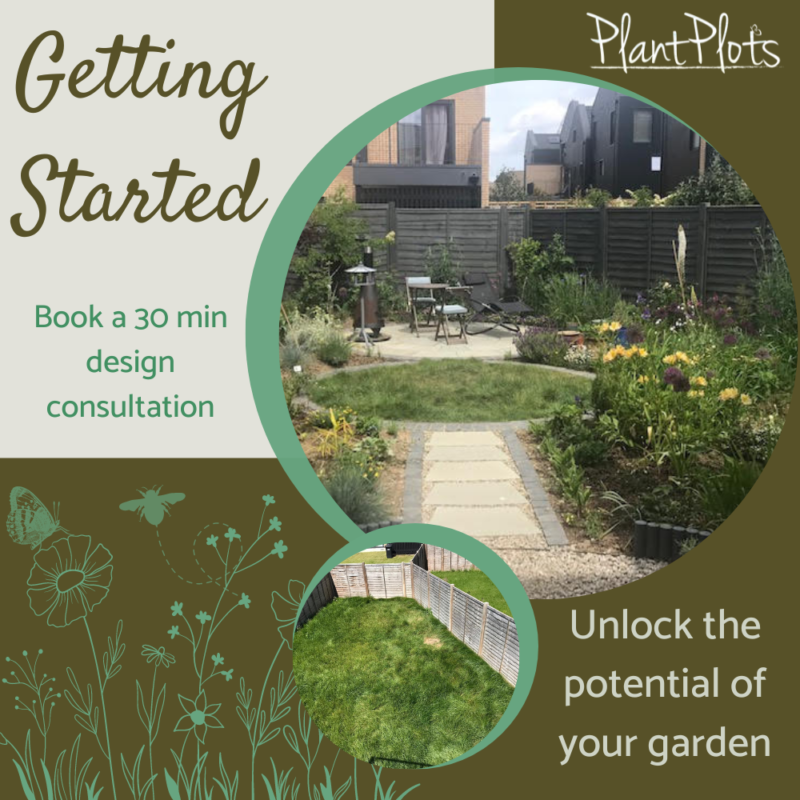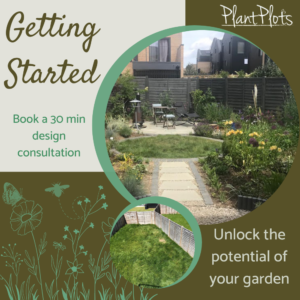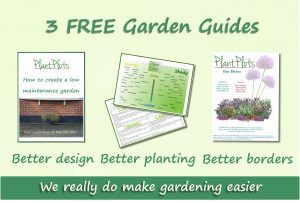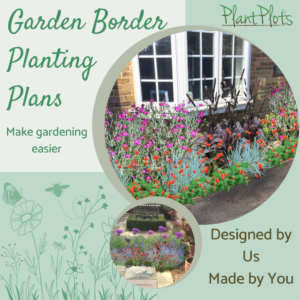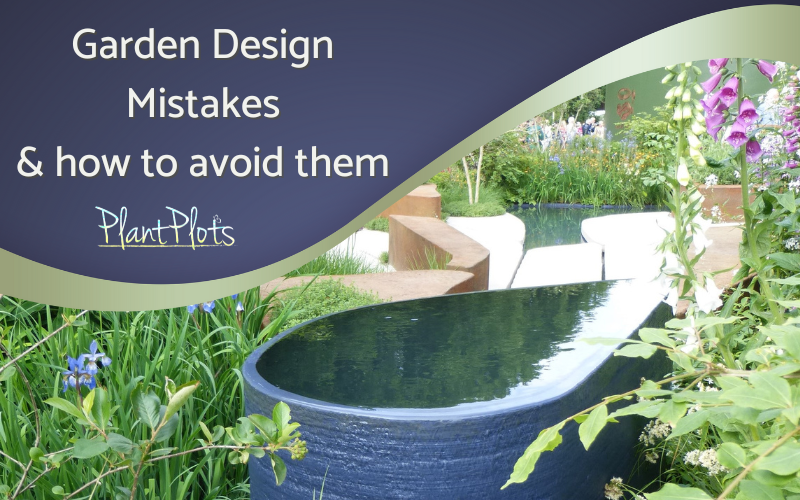
Garden design mistakes to avoid making
If designing a garden was easy – I’d be out of a job as a garden designer! Garden design presents a unique set of challenges, the size and shape of the garden, the climate, hiding ugly objects, and the different needs and wishes of those who use the garden. So here are some tips to ensure your garden avoids the most common design mistakes.
And then there is life itself, the plants grow, change shape, change colour and change size. Plants die and new plants appear (even if you don’t want them to!) and then gardens attract wildlife too.
The upshot is, that if you don’t know much about plants, it’s really hard to work out what your garden needs. So a useful place to start before you begin to redesign the garden is to understand what can go wrong with garden design.
Hopefully, if your garden avoids the most common design mistakes, then at least you have eliminated the negatives. We also offer online design helping you design your garden whether the garden is large or small, or you can watch our design videos
How can we help? Type your design question into the search box
How to avoid a boring garden
I have yet to find anyone who doesn’t like having a garden or outside space of their own. Even the tiniest balcony provides a welcome escape from the world of indoors. Having a garden enables you to enjoy the outside without the inconvenience of being outdoors. The kettle is only a few paces away and it’s easy to duck back into the warmth if the weather decides to misbehave.
So our gardens should be wonderful, exciting and happy places that entice us outside to enjoy the world. Sadly though in many cases the garden simply doesn’t. So how can you avoid a boring garden?
Boring; "so lacking in interest as to cause mental weariness".
What then has happened, after all, nobody would consciously design a garden to be boring or dull, so why do so many gardens end up as uninspiring places?
The most important point to remember though is that boring gardens aren’t designed, they evolve. They creep up slowly without you noticing, for example when that lovely flowering plant died but wasn’t replaced or the hanging basket display never quite looked like it should but also because those reliable (but indestructible) shrubs just grew to such a size all the space left to plant anything pretty got used up. This post will look at why the garden is boring in the first place, and the simple changes you can make that create interest, next week will focus on the design and layout and how easy changes can make your garden a whole lot more interesting.
A boring garden, then by definition lacks anything interesting but more importantly lowers your mood whilst raising feelings of negativity. It becomes a vicious circle, the less you use or enjoy a space the less you care about it and the less time you want to spend there. Which is such a shame.
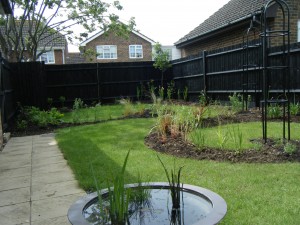
As a garden owner then, you need to know how to haul a boring garden back from the brink and secondly how to avoid a boring garden in the first place.
Structural changes to the garden however are more permanent, requiring time, effort and money. It is vitally important to consider what you intend to change and why, before starting any project. Changing the design of the garden is easy, but so too is making the wrong change. Sadly structural mistakes are the most expensive mistakes to make!
Take this image of a garden, it is not the most exciting space. Before any improvements are made, why the space is boring needs to be analysed. The starting point is understanding how we see things.
How do we see?
Duh, with our eyes I know, but the question is deeper than that. I mean how does your brain process the information it receives, what is it looking at most? So taking this garden, what are you noticing?
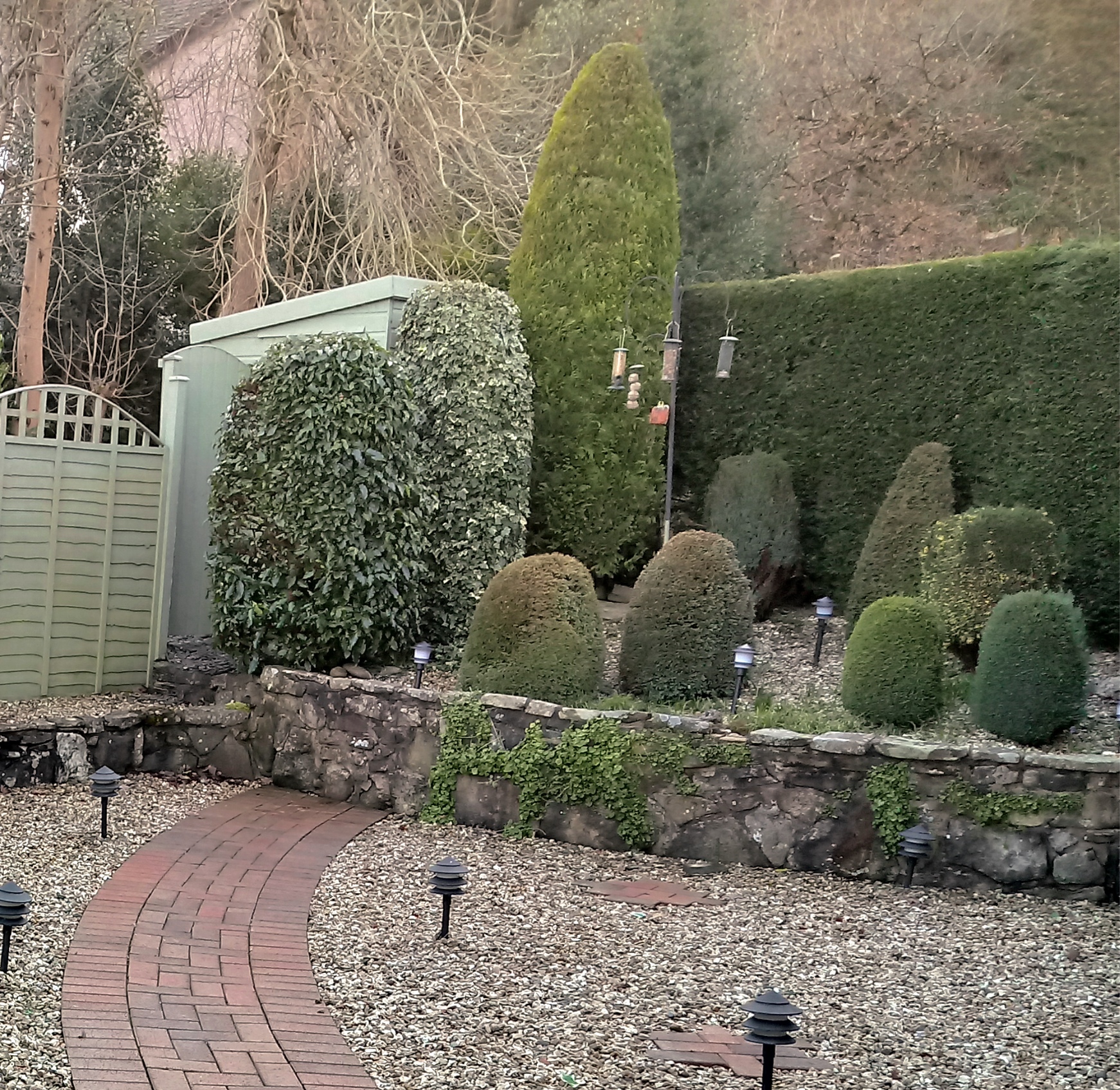
Most likely the three elements that jump to the fore are the fence, the path and the wall. Now, these aren’t the most dominant just because of the size, these catch your attention because of the lines created.
Where do the lines make you look?
Your eyes follow the lines in the garden, so in this case, because there is very little else in this garden – that’s what’s noticed. Secondly, the planting in the garden doesn’t demand any attention either, it’s just green, very static and shaped in a rather unusual array of domes!
 Putting this garden right then involves understanding which changes will bring about the greatest benefits. For this particular garden are:
Putting this garden right then involves understanding which changes will bring about the greatest benefits. For this particular garden are:- Breaking up the dominance of fence, path and patio lines
- Creating contrast with the surrounding landscape
This garden only needs two structural changes. Replacing the green barrier fence with a more open one and secondly, removing the path to nowhere. The other changes add movement, scent, touch and colour.
But there’s another equally important element of design to consider – curiosity
When was the last time you walked up to a door but never opened it, or you reached a bend in the road but never went around it?
Humans are inquisitive beings, it’s why we love science and sending rockets into space, and it’s why we try new things and explore unknown places; the garden can tap into this too. If there is nothing that piques your interest, you cannot avoid having a boring garden!
Obviously, the curiosity level is not quite so grand as space travel, but the concept is the same!
Take this garden for example which is nice enough. There are attractive plants in the borders, but is this really the best that could be achieved?
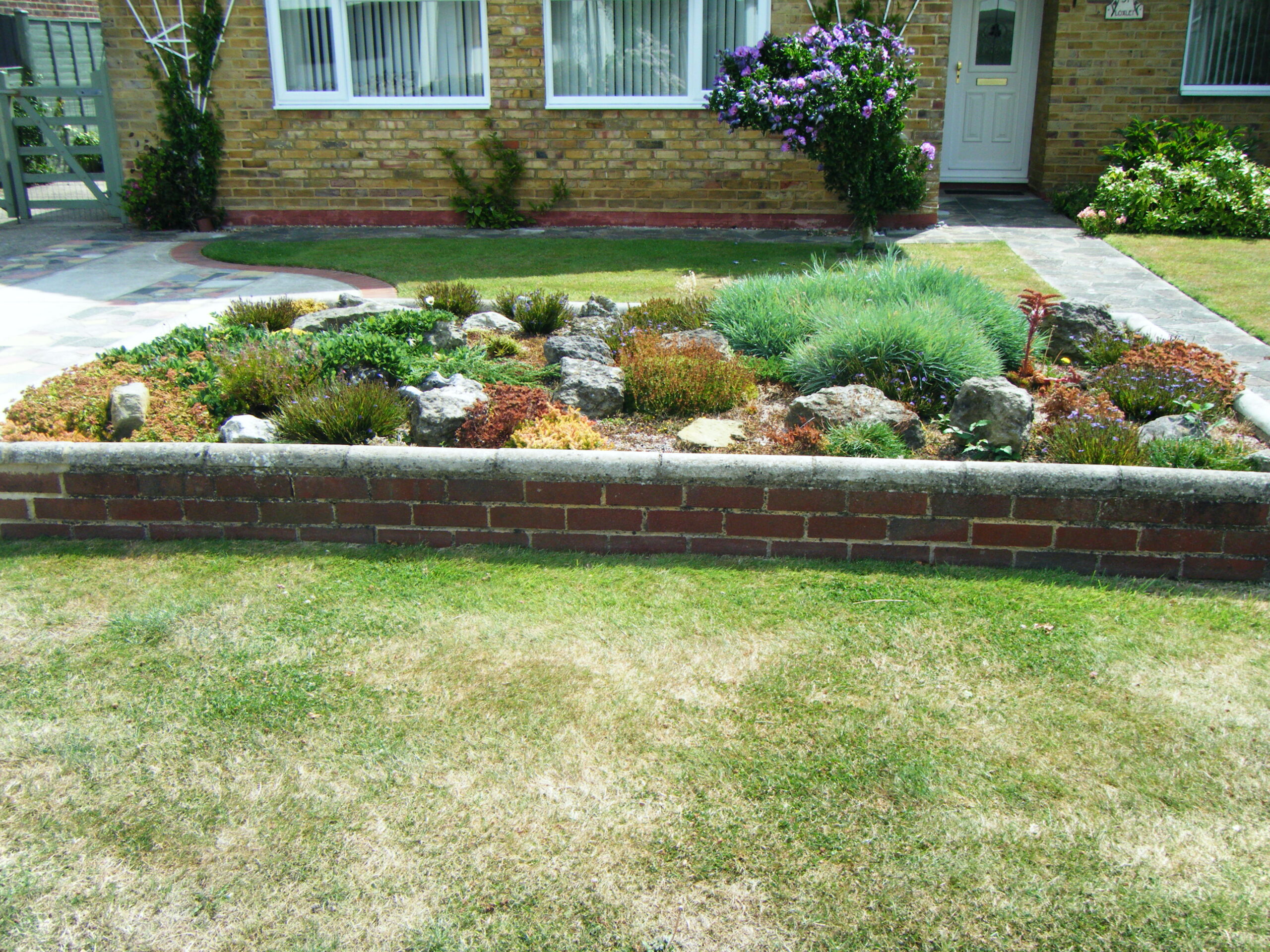
Making an entrance
Gardens should make you want to walk into them, creating an entrance is an easy way to make this happen. It doesn’t have to be an arch or pergola though, a simple gap makes a path to walk though.
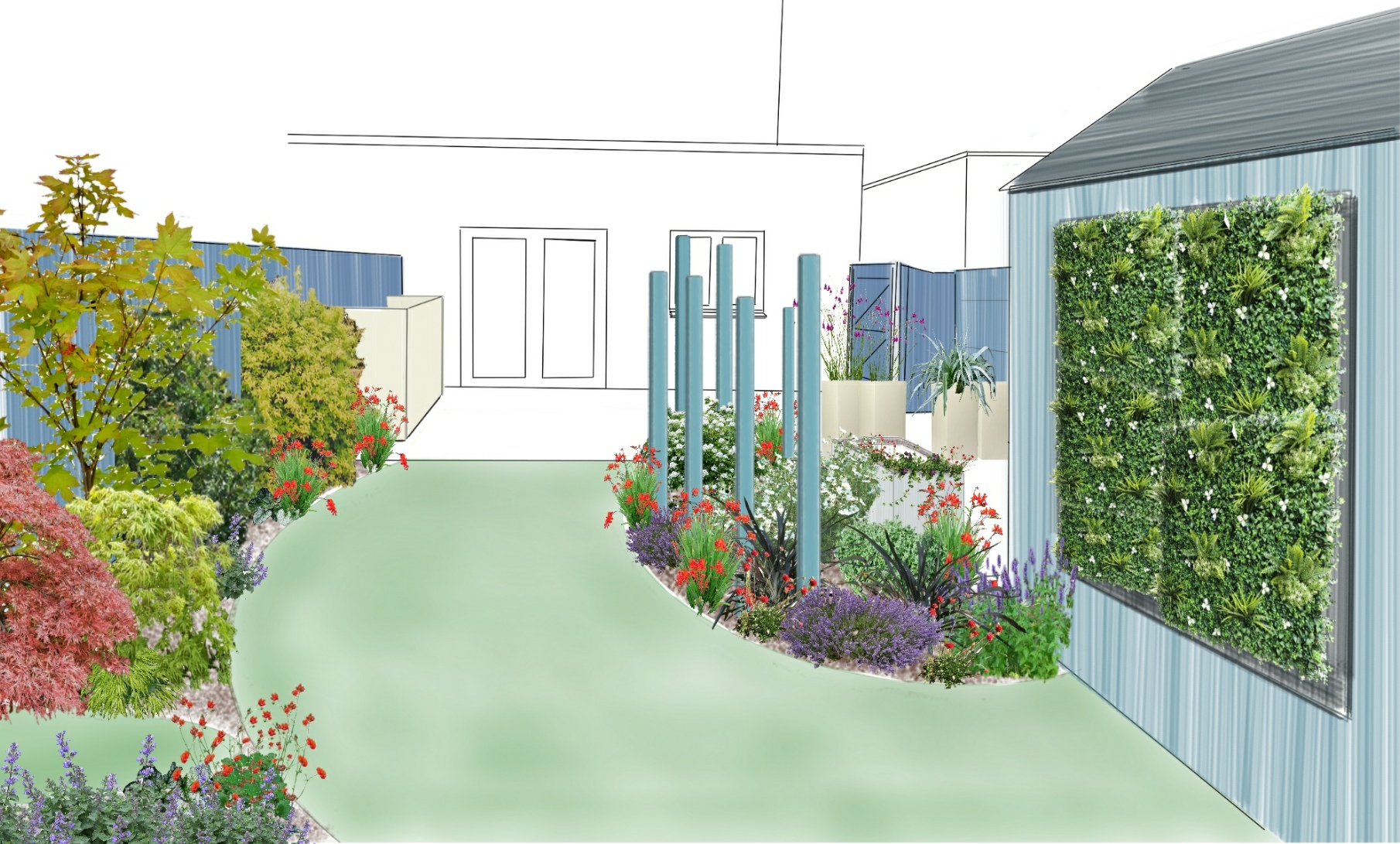
Adding a curve to the border adds interest to the garden, but only if you can’t actually see around the bend.
Our inquisitive nature makes us want to see what can’t be seen. Just make sure there is ‘something’ there to actually see!
In this case, adding height to the border stops the view around that bend. Once there, the black plant in a tall pot is ‘discovered’. To add a little more interest, this feature can be repeated elsewhere too.
Making a garden less boring is not just about adding more ‘stuff’ to the garden.
The key point here is to ask why. Asking why any feature needs to be added to the garden justifies its inclusion. For example, you would like to put a bench in the garden, but rather than just plonking it in the sunniest corner, justify why it needs to go there.
Questions like; why would you want to walk there and what would there be to look at once you sit there?
Too often more is just added to the garden, more pots, more flowers, a statue or a water feature. However, without a purpose for why an object is being put somewhere, the garden will quickly lose its visual design. The space loses its ability to capture and hold your attention – it becomes boring.
How to make a boring garden less dull!
All gardens need to make you feel something, it must generate an emotional response, we are all driven and controlled by our emotions. If we feel hungry we eat, when sad we cry or happy we laugh; these emotions are to a large extent driven by our senses. Prick your finger, it hurts and you feel an emotion to either yell out or wince. Stimulating your senses is then key if the garden is to become a place you enjoy being in.
If the garden is a place that smells lovely, is filled with interesting textures, and there are places that invite closer inspection, it becomes more interesting. The problem is how do you do that in a small space or what do you do if you aren’t an expert gardener?
Gardens don’t need to only look like this to be interesting
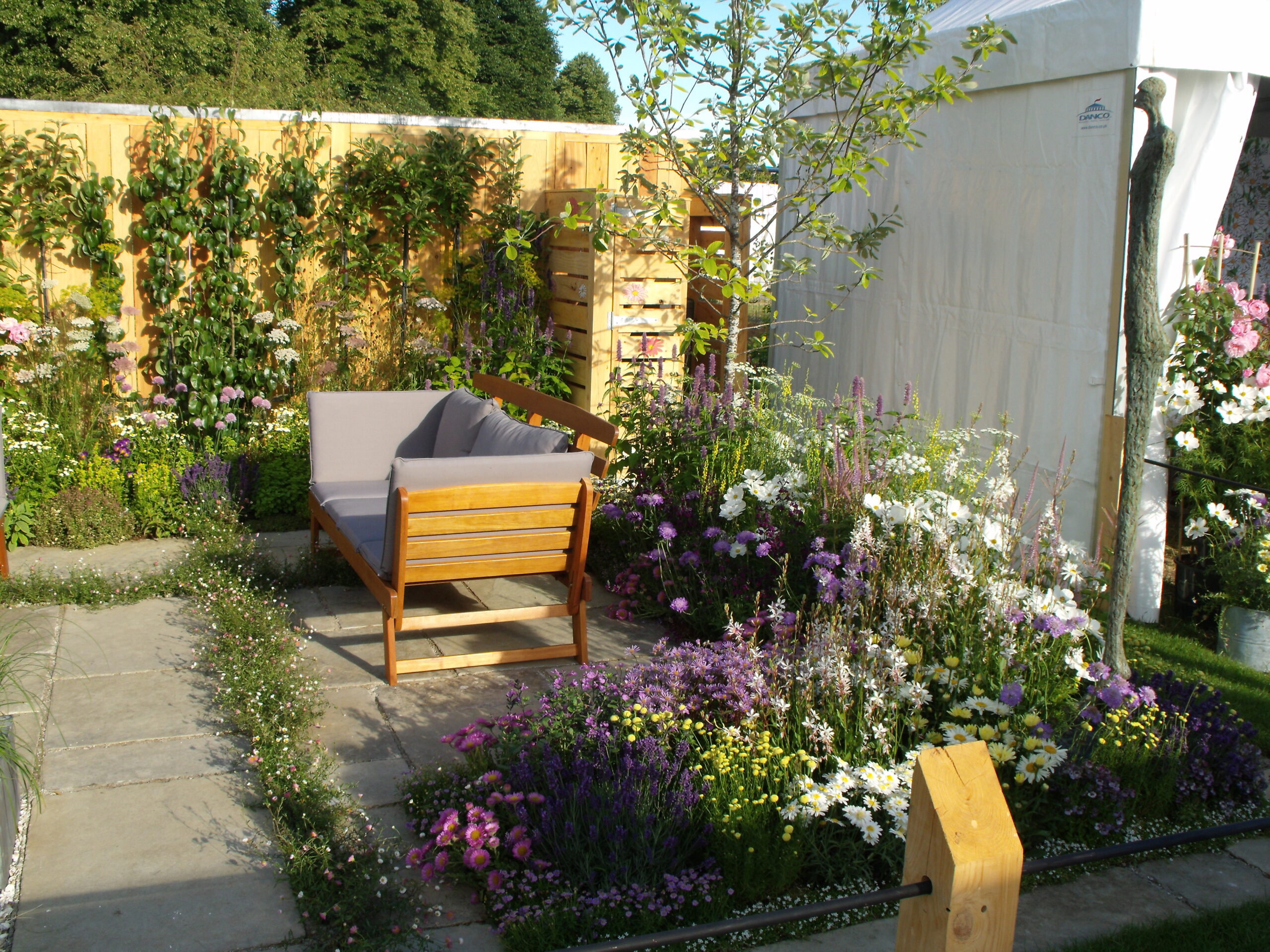
The first step is to give yourself a break; a garden does not need to be filled with unusual plants or be expensively designed to be interesting. Fabulous gardens can be created in small spaces and for not much money. The essential elements responsible for capturing and holding your attention are the same whatever the size of the garden:

- MOVEMENT
- SMELL
- TOUCH
- COLOUR
Movement:
Our eyes are amazing and incredibly adept at spotting things that move. Which is an evolutionary trait that helped our ancestors find food and avoid being eaten! Clearly, we are less reliant on survival these days, but if in your garden things move, you will automatically notice them. Adding movement has a double benefit too, most gardens are urban and surrounded by buildings, which don’t move, and adding plants that dance in the breeze provides a clear contrast with the surroundings. The plant’s dancing becomes even more noticeable and enjoyable to watch.
- use tall willowy plants like grasses
- site plants where they can cast shadows on walls
- have plants that flower on taller stems or that have tiny flowers like Gaura, Geums or Alliums
- plant in groups, more dancing is definitely better!
- hang small mirrored balls that dance tiny blobs of sunlight around the garden.
Smell:
The importance of Scent is often forgotten when choosing plants. It should be the primary reason the plant is purchased. Scents and perfume evoke memories, possibly of holidays and other happy memories, so use them in a garden. Many plants that flower in the winter months have amazingly beautiful scents, like Sarcococca (which should be essential in every garden by the way..), lavenders, thymes, some geraniums, and sage all add to the experience in the garden. In fact I would go so far as to say in a small garden you shouldn’t choose any plant if doesn’t have a scent as well as a lovely flower.

Touch:
We are tactile creatures, babies use touch and taste to make sense of the world and so do we as adults. You add levels of interest and enjoyment if when walking down the garden you can run your hands over plants, releasing the perfume or just because it feels nice. Use plants with soft furry leaves as well as softer more tactile grasses. Add to that taste and you are onto a winner, having scented plants with edible leaves (herbs) or edible flowers (nasturtiums or violas) adds so much more to the garden.
Colour:
The common mistake regarding the use of colour in a garden is to have too much. The theory being more colour must be more interesting when actually the reverse is true. Too many colours cause your brain to have a visual overload, you actually end up noticing the garden less because your brain filters out the ‘noise of colour’. A smorgasbord of colourful plants placed in pots in front of the shed (to hide it) won’t; why, because your brain prefers to notice the simple information instead which is the shed. The kaleidoscope of flower colours gets downgraded in importance by the data-processing parts of the brain.
How to use colour in the garden
The dominant colour is going to be green, this is the backdrop, and you can choose to then contrast or coordinate. Ideally use no more than 2 colours of flower but within that have different shades of the same colour.
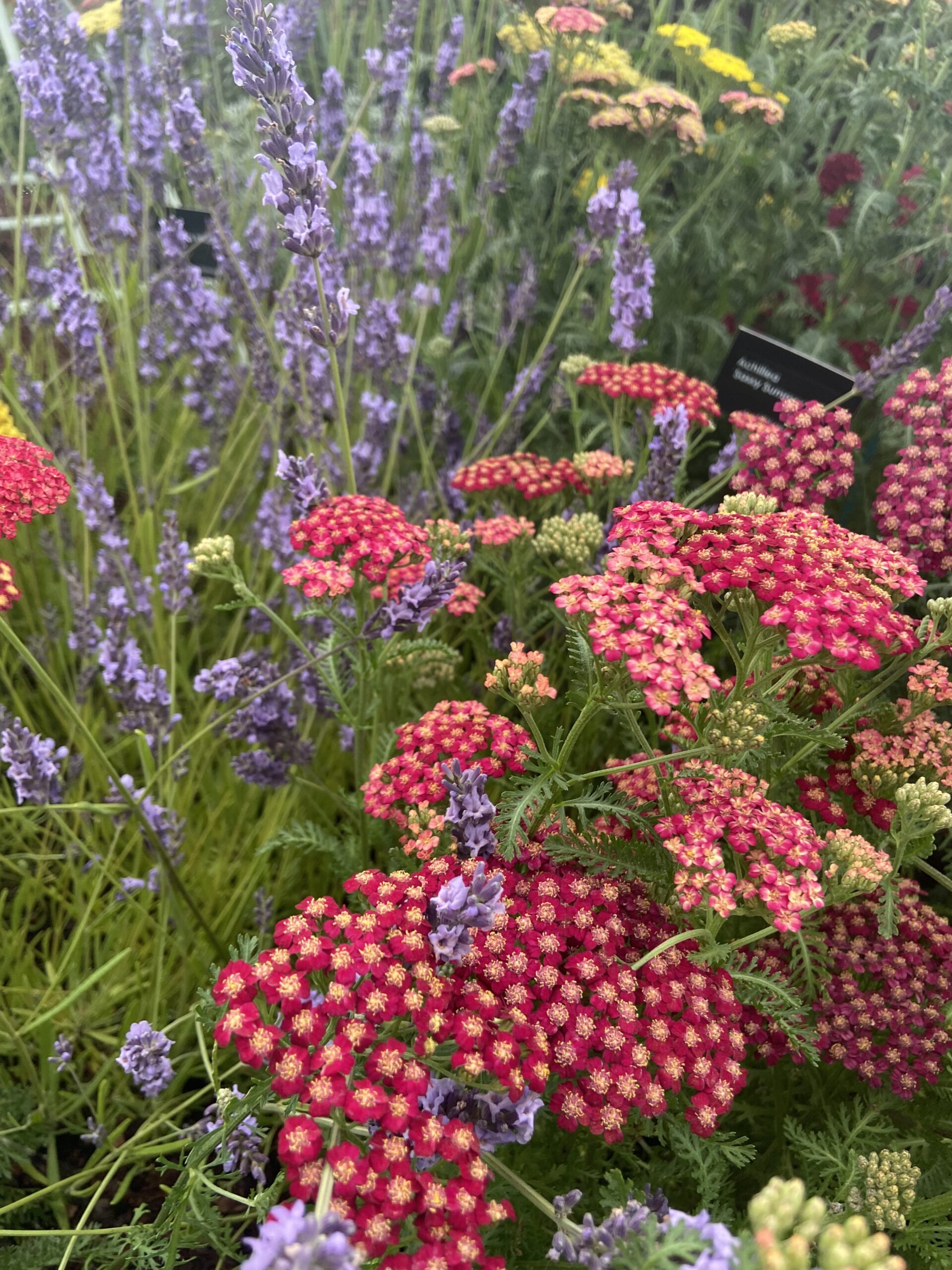
Avoid a boring garden by using bright colours that stand out against the background and scream ‘look at me’.
Place a few blobs of this ‘look at me’ colour in different places, your eye then searches for these colours around the garden. They don’t have to be the same plant, by the way, just the same colour.
Colour can be used to capture attention, placing these ‘look at me’ plants in different locations, helps draw attention away from the less attractive places. Putting the ‘look at me’ plant in front of the shed, just makes the shed more noticeable, instead, put it elsewhere to draw the attention away from the eyesore.
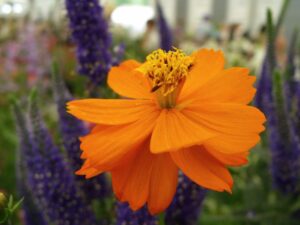
- use green plus no more than 2 colours
- have one ‘look at me colour’ and pop it around the garden
- use complimentary or contrasting colours schemes – not a mixture of both
- Reds, Oranges and Yellows will appear closer, Blues, Purples and Blacks further away. White is bright so will pop out anywhere
Boring gardens can be made better
I hope this has helped avoid that boring garden trap. All the tips help to make any garden feel more interesting and it won’t cost much either. A few carefully chosen plants will have a big impact on a small garden.
Choose the plants by how you want to feel, if the scent reminds you of your grandparent’s garden or you remember that holiday from the scent of another – great! Including these in your garden will help transport you to another place it will capture your attention and boring fades into the distance.
The garden is making you feel good
Simple design rules to remember:
- Straight lines are visually dominant in a garden – break up long straight lines (like fences) by using tall plants
- Straight lines lead your eyes to the end, so make sure there is something there to see.
- Entrances add interest and invite you through
- Add curiosity by stopping all of the garden being seen from the house
- If the garden goes round a bend – have something there to discover
- Ask the question why; why is this feature needed
- Lastly you, remember the garden only needs to be interesting to you
Plan for Debris
Good garden design is not just about how it looks, its also about how the garden works with the design too, get that wrong at your peril!
Bedding Plants - there are better options
So what’s the issue here?
Well, before we start analysing bedding plants, what actually are bedding plants?
In general, they are described as Annuals, Biennials, Tender Perennials or Half Hardy Annuals – so they are all plants that;
a) Won’t last more than one season
b) Will last more than one year, but will conk out the following year
c) Will last for a few years as long as you have somewhere to keep them for the winter
d) Are only supposed to last one season, but may in milder climates do rather better
The upshot is that most of these plants won’t last very long. To compensate for their short lifespans, bedding plants are designed to ‘live the life of a rock star’ i.e party hard and die young!
Bedding plants provide us with loads of fantastically coloured flowers. These are very often bred to be much larger than a plant could sustain naturally and the plant is designed to keep on going…right until the end.
However, in order to ensure our little plants can ‘rock on all summer’ they do need rather a lot of attention, regular feeding, deadheading, plenty of water and protection from bugs and other nasty munching insects.
The alternative – buy bulbs. They are cheaper, last longer and look after themselves -so you don’t have to!
What is Centrifuge Planting?
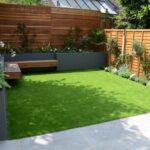
Gardens do not feel bigger with a bigger lawn space. You will not use the garden more because you have more grass to walk on. The garden plants can’t grow well because they have been squished in between the fence and the lawn.
Centrifuge planting simply splatters the plants all along the fence line. It is not a good way to design a garden.
Totally Private also means Totally Enclosed
Obviously, we all love our neighbours – but what if you’d rather not see them as much!
Making a garden private can be achieved without building green walls around the garden. Yes, fencing and hedging create more privacy, but these also box you in too. Hedges reduce light levels and any view you may have, so all you see is a big green wall.
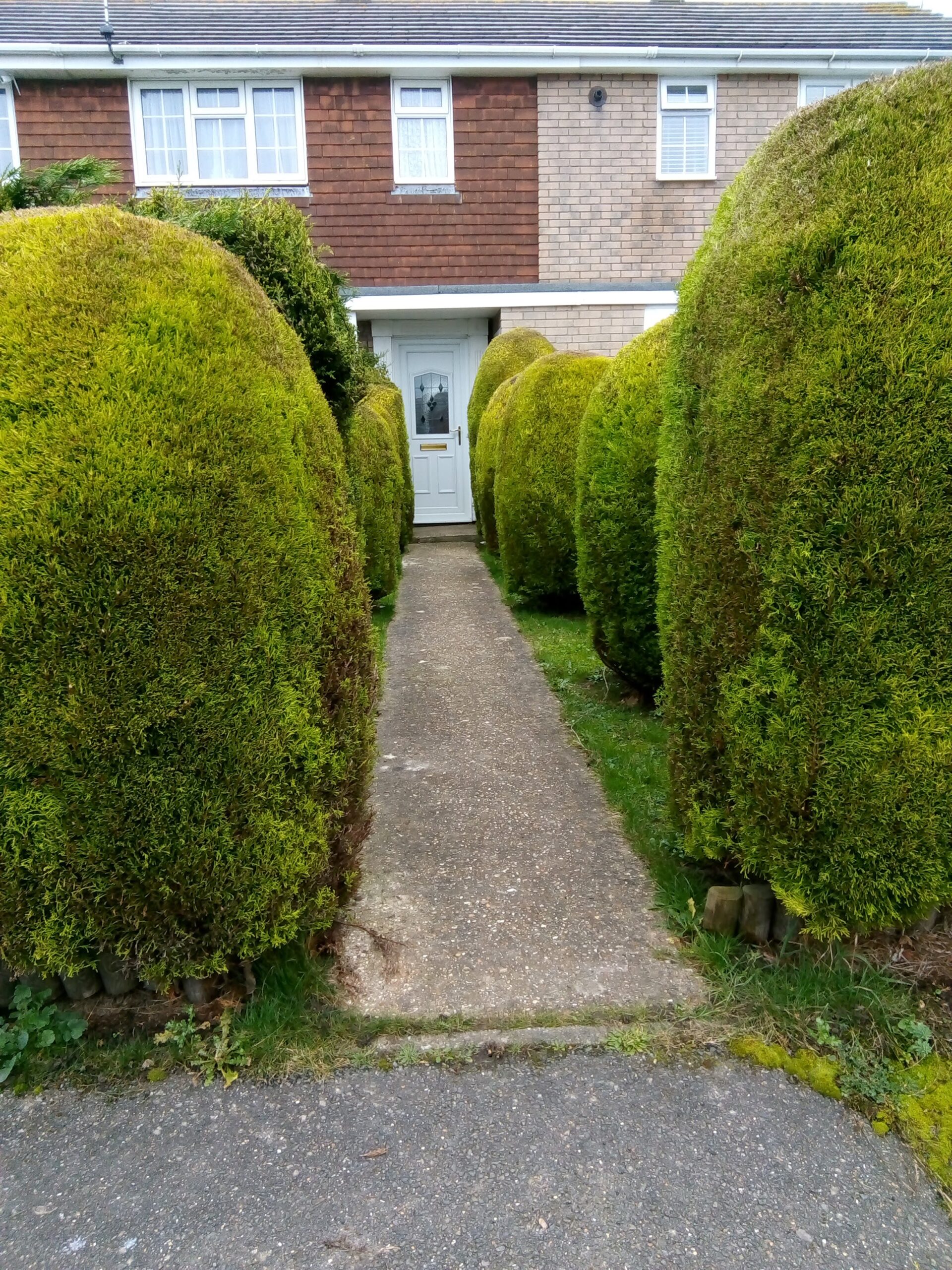 Hedges, especially Lleylandii, become big dense evergreen barriers that block out light, and out-compete smaller plants around them. All you end up with is something not very attractive for both you and your neighbours to look at every day either.
Hedges, especially Lleylandii, become big dense evergreen barriers that block out light, and out-compete smaller plants around them. All you end up with is something not very attractive for both you and your neighbours to look at every day either.
So let’s throw out the dark green barrier mentality and look to other plants that provide you with just as much privacy, but look so much nicer for you to look at as well.
The whole principle is this, you don’t need to make the whole garden private. The garden just needs to FEEL more private. This means it doesn’t need by surrounding your garden with an impenetrable screen.
They may not offer quite total privacy, but they will all look a whole lot nicer than a plain old hedge!
Be inventive, grow climbers through plants for more interest. Use plants that move and sway in the wind, and use colours other than green!
The key point here is that we are not trying to make all the garden private. Rather, just making more private the part of the garden you enjoy sitting in the most.
One tall strategically placed plant may be all that’s needed to give you a sense of privacy.
Unnatural Garden Design
If you don’t want straight lines for the garden borders, then use a simple curve. Do not create wobbly wavy garden border lines. They are awkward to mow around and won’t give any garden a natural soft flowing look.
One simple curved line for the border works much better.
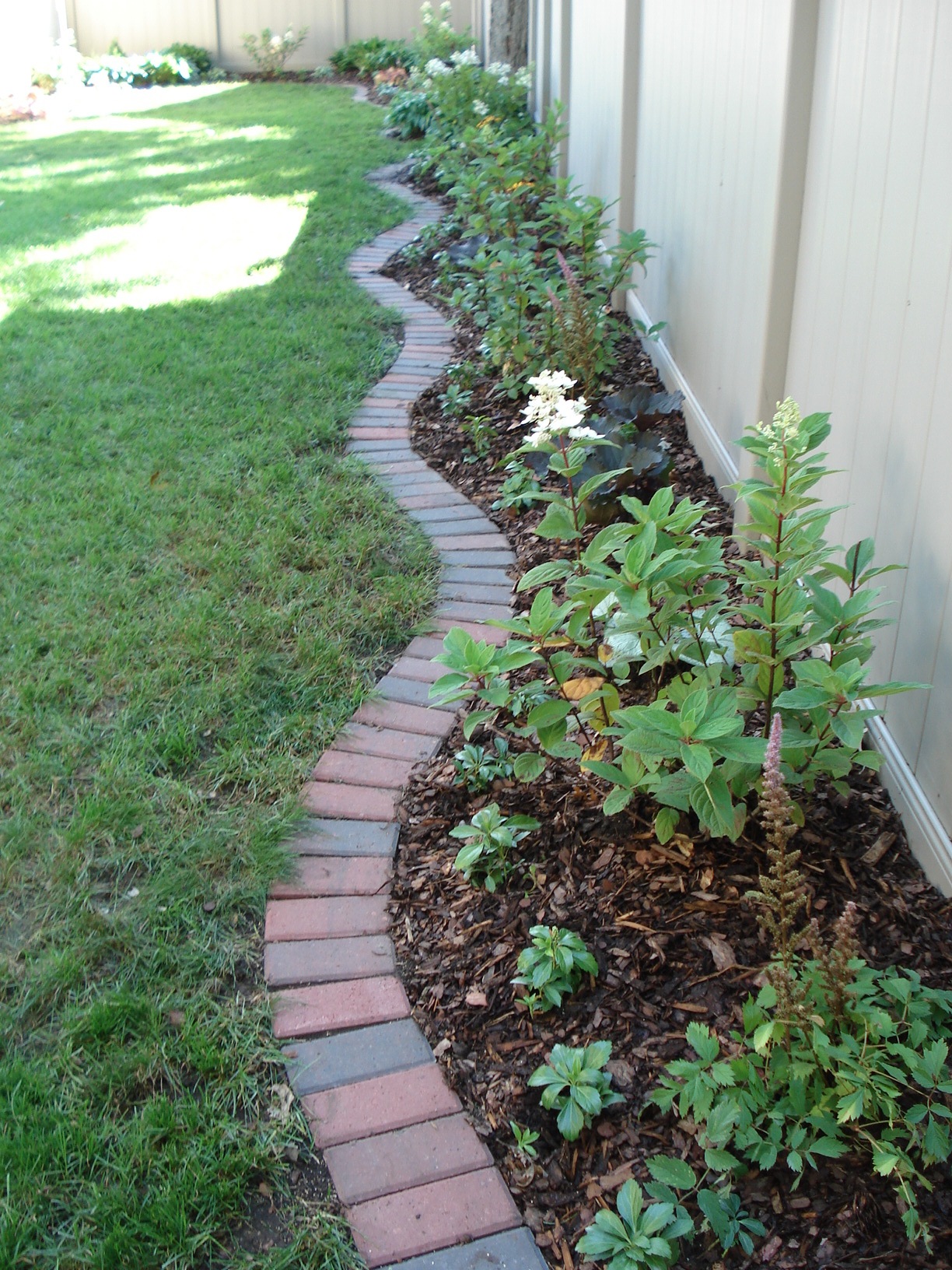
Pick & Mix or 'Pop it in Planting'
Garden borders need some planning so a few rules when buying plants
Rule 1 – Never ‘Pop into’ a Garden Centre for Some Plants.
All retailers want us to buy stuff, they have lots of stuff to sell and so make that stuff look really exciting and nice and attractive.

Funnily enough, all of us get duped into buying stuff we don’t want or need or know what to do with – all the time!
Garden Centres are experts at this too. The horticultural world has decided what we, the consumer, will want to buy. They then grow all these plants and present them to us for purchase.
Plants abound in every size shape and colour, it’s like being in a giant sweetie shop. And we fall for it every time,
“ooh that looks lovely, buy one”,
“Have you seen this one, that’s really pretty too”, buy one.
We, the said consumer, then return home with this bag of brightly coloured sweeties and usually struggle to find a place for our new purchases, so we tend to do what we’ve always done, simply pop them in any old gap we can find in the border.
Rule 2 – Take a Photo of your Garden
You are going to be tempted by all the lovely plant displays and goodies on offer – so a cunning plan is to have a picture of the sofa (garden border) on your phone. It will help keep you focussed on what you really need to get.
Rule 3 – What shape does the plant need to fill?
Right, this is the technical bit, and the best way to explain this is with a few diagrams…
All borders are 3D in shape, so you need to think about length, width and height.
You need to think about how the plants will fill the whole area – and this helps you determine the right shape of the plant to fit the space you need.
To fill the 3D space, you can create a more balanced border.
As you can see in the final image, the whole area is filled, none of the plant shapes is too dominant, it all looks OK. And that’s all you need to think about, if it looks OK, it probably is.
We still haven’t even begun to speak about what types of plants yet, just, colour and shape.
However, the next rule is knowing how the plant will behave and it’s probably the most important. 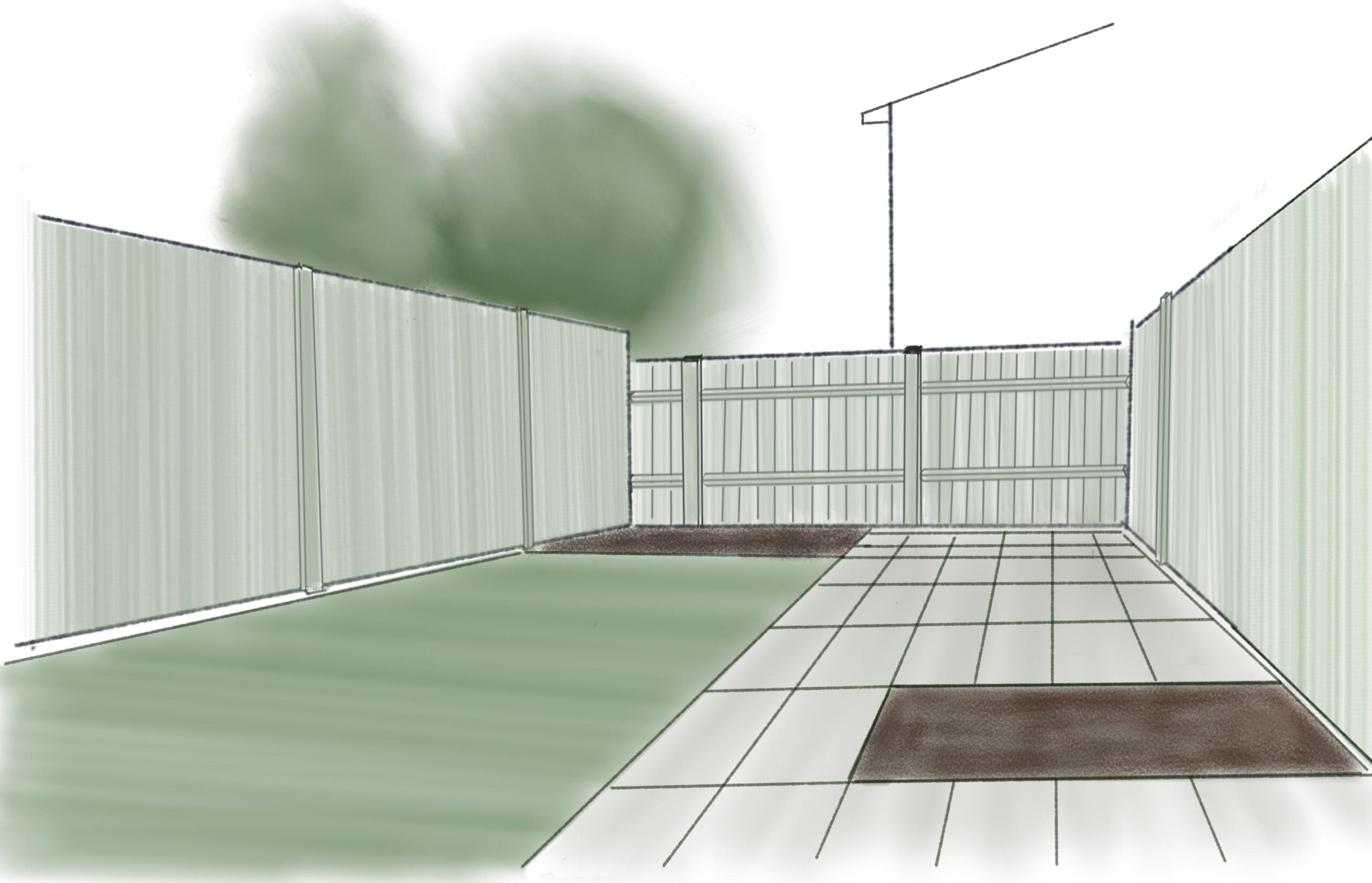
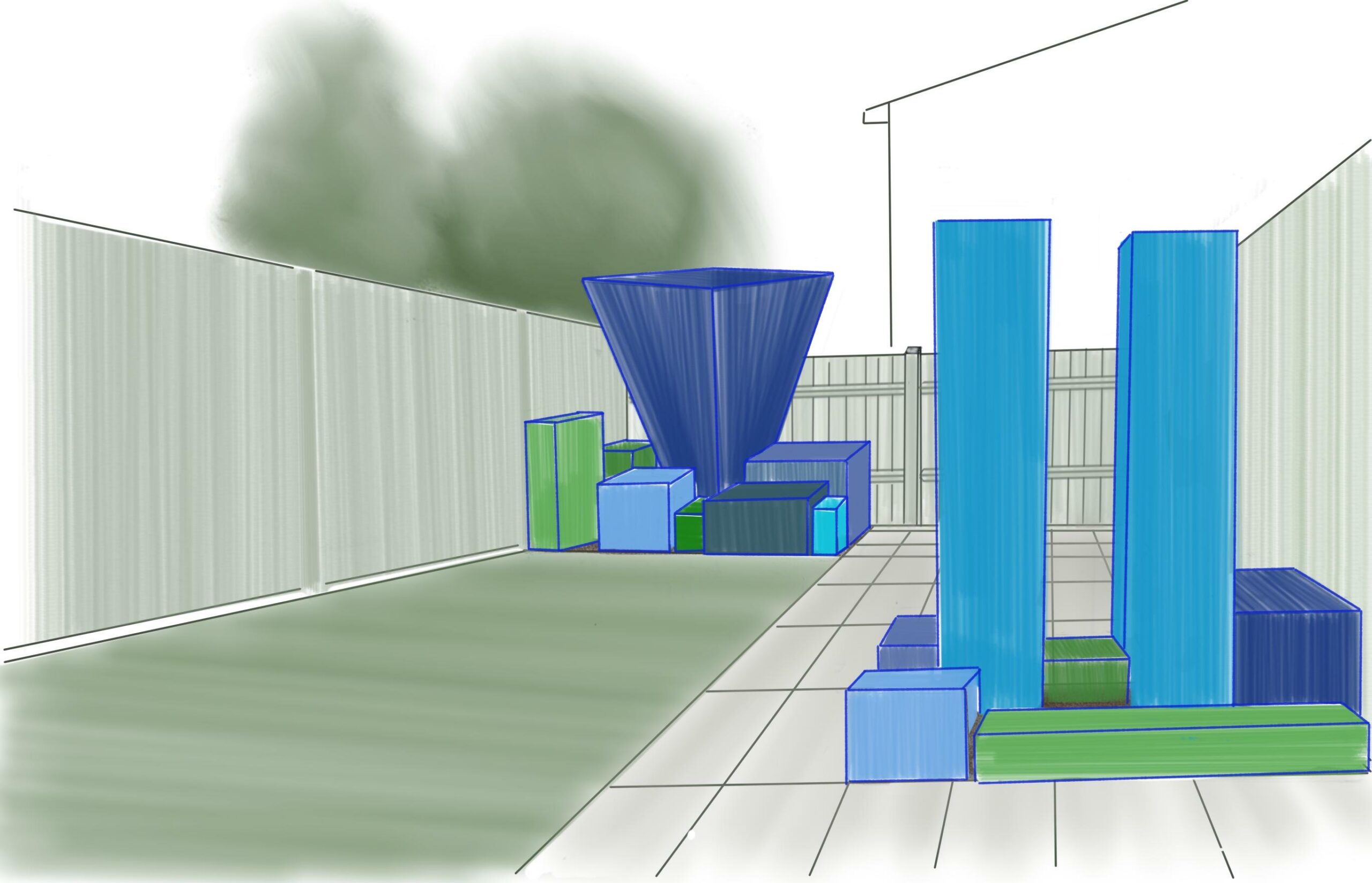
Rule 4 – Read the Label, always.
Plant labels are a real nuisance these days, all you get are a few symbols and some infographics. The essential information is there though and you need to read it.
It’s important to know how big the plant will get, if it says 10ft in 5 years, then it needs a pretty big gap in the border – squeezing it in anywhere else will only cause you problems in a very short time.
You also need to know whether that pretty plant in the pot will spread like wildfire all over the garden or have ambitions to world (or at least your garden’s ) total domination!
Plan for Debris
So why is this killing us then? And what relevance has this to do with gardening?
The problem is this, the constant barrage of imagery and messaging in adverts has altered our view of the world around us. More importantly, though, it has increased our physical and emotional disconnection from it. We use phrases like; the world outside of the natural world, well outside what? My house? Am I not then ‘natural’ because I am human? This disconnection is reinforced by using phrases like germs and infection, which add to the view that there are dangers lurking ‘outside’ that humans need to protect themselves from.
So, collectively we thoroughly disinfect our houses, keep things perfectly clean and kill 99.9% of the ‘germs’ in the house.
The trouble is that this spills out into the garden too. Advertising images are always of immaculate gardens, perfectly mown weed-free lawns, large exuberant flowers and rich lush green foliage. Butterflies and bees are permitted images because these are ‘good’. Why, because these insects enhance the enjoyment of the garden.
Weeds and non-permitted insects are portrayed the same way as germs – with nasty evil looking images hell-bent on sabotaging your efforts. They deserve their fate!
One spray kills all known invaders in a single application are advertised, so you too can have the perfect garden!

So why is the drive for perfection killing us!
I must state that this is my opinion, but the evidence is there (some proven, some anecdotal and some common sense) I am of the view that just because there is not a scientific research paper proving a theory, it does not mean that theory does not exist! So here’s some food for thought:
- Humans do not stand alone – we are part of the ecosystem
- There has been a significant rise in allergies, chronic illnesses and behaviour disorders over the past decades.
- Humans in urban areas have lower levels of gut biodiversity than those in rural areas, but higher levels of chronic inflammatory disease
- Humans coexist with trillions of microorganisms that live on and with us
- Certain pesticides are known to cause damage to bees brains and kill millions of bees. In the USA these chemicals are still permitted and regularly sprayed on the food you consume.
- Einstein predicted all life on earth would cease after 4 years if bees became extinct.
- 45,000 tons (40,000 tonnes) of pesticides (banned in parts of the world) are sprayed onto lawns. AND THIS GETS WALKED INTO HOUSES.
